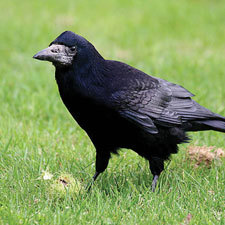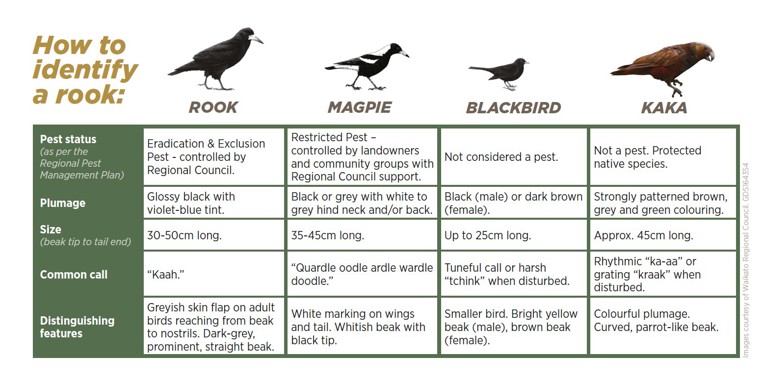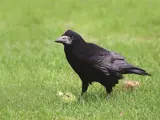 Rooks
Rooks
Common name: Rooks
Botanical name: Corvus frugilegus
Management programme: Eradication
Where did they originate from?
Rooks were introduced to New Zealand from Europe and Britain in the 1860s to control pastoral pests. By the 1960s, numbers had increased significantly and shooting and poisoning campaigns were undertaken to reduce densities. Mismanaged operations and inappropriate methods led to the displacement of birds and the establishment of new colonies.
Why are they a pest?
- Rooks can have the potential to cause thousands of dollars worth of damage to crops of emerging maize, pumpkins, potatoes and walnut trees.
- They can also damage pasture by tearing it up when searching for grubs, exposing bare soils to wind erosion and encouraging weed germination. The damage caused is similar to that caused by pigs searching for food.
Where are they found?
- Unless disturbed, rooks are highly gregarious birds and they establish permanent breeding rookeries and night-time winter roosts which they maintain for many years. They prefer to nest in mature Pinus radiata or Eucalyptus shelter belts, or small stands where there is a clear view of approaching danger.
- During the breeding season (early September to mid-December) rooks generally forage within 1-2km of rookeries. Outside of this time they can forage over 10s of square kilometres. Their behaviour is strongly influenced by the availability of highly preferred foods.
- In the Bay of Plenty, flocks of 50+ rooks were active in the southern Rangitāiki, however in recent times sightings have been limited to a few birds or individuals around Waimana, Pāpāmoa and Ōpōtiki.
What do they look like?
- Rooks are large, glossy, purplish-black bird with a prominent, powerful bill. As they mature, they develop a greyish-white patch of scaly skin around the base of their pale beak.
- They have a distinct, harsh ‘kaah’ or ‘caw’ call.
- Rooks can easily be mistaken for other birds, typically they are confused with Kākā, magpies, or even blackbirds. They are much larger than blackbirds, slightly larger than magpies and have no white colouring. They do not have the sickle beak or the strongly patterned brown/green/grey of a kaka. An average rook weighs around 400 grams and is 45cm long.

What are the rules?
Eradication
Eradication pests are present in the region but are limited in their size or extent of infestation. The eradication of these organisms is a feasible and cost-effective solution. The Bay of Plenty Regional Council is responsible for their control or eradication from the region. Action may be required from landowners or occupiers to support a control operation.
How do you control them?
Rooks are extremely prone to being disturbed, therefore we ask that people report rook sightings immediately to the Council rather than attempting to shoot them. Disturbance can break up populations and make effective control difficult. In the past, mismanaged operations and ineffective control methods have led to the displacement of birds and the establishment of new rookeries.
If you think you have seen a rook please contact the Bay of Plenty Regional Council immediately on 0800 STOP PESTS with the following information:
- Date and time sighted.
- Location of where it was sighted (if possible mark on a map or provide GPS waypoint).
- The number of rooks seen.
- What they were doing (flying, feeding or roosting)
- If flying, what direction were they headed.
- If feeding, can you tell what they are feeding on (e.g. following a plough feeding on grubs).
- If roosting, are they using the roost trees regularly.
Images

